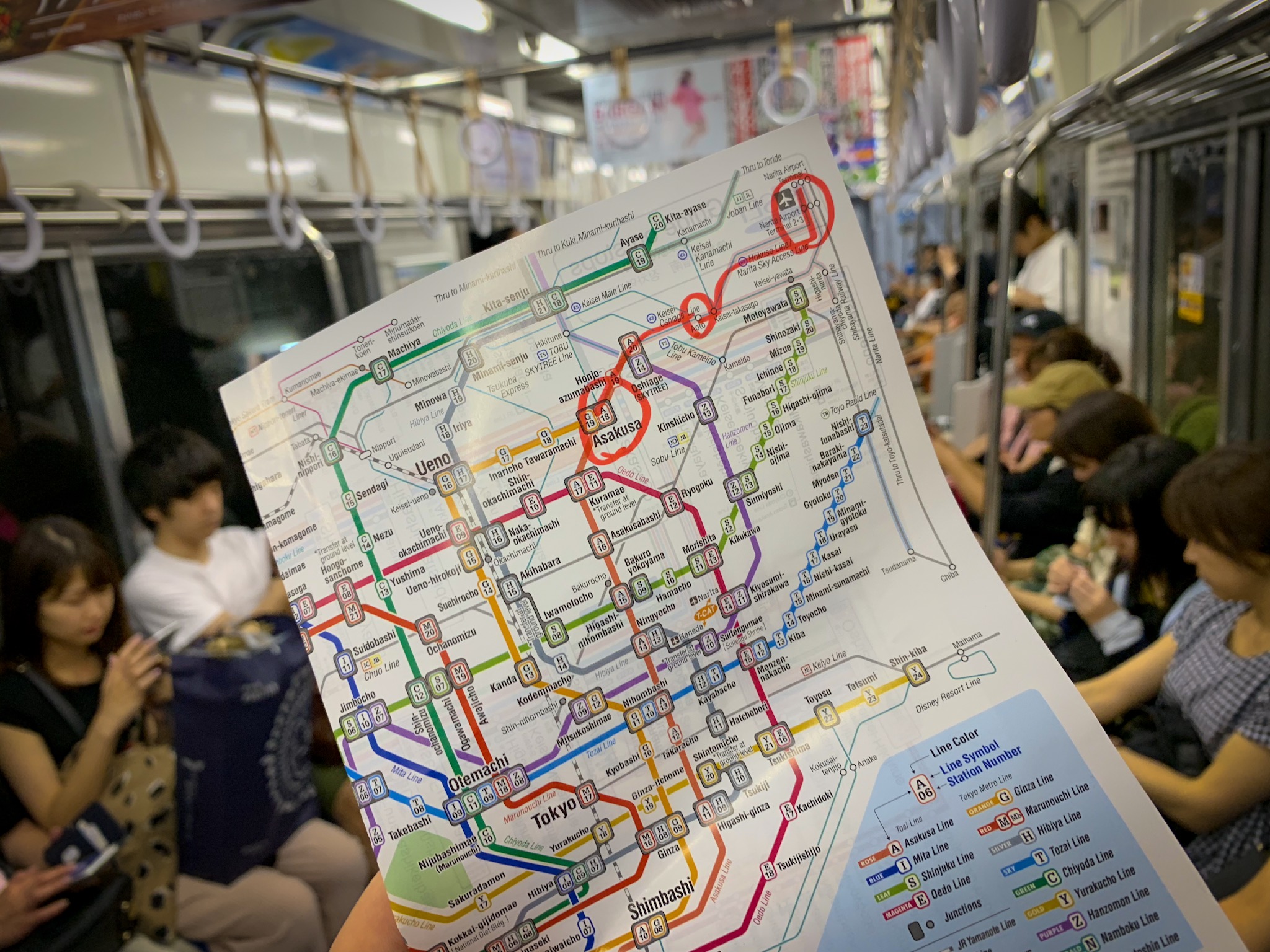Why Japan didn’t blow me away
/Towards the end of 2017 I became acquainted with the Japan Exchange and Teaching (JET) Programme – a scheme whereby English speakers live and work in Japan teaching schoolchildren English.
The salary wasn’t bad, I’d get to live in another country and, although teaching wasn’t really something I wanted to do, I’d read reviews that it wasn’t an intense scheme, so there’d be plenty of time to enjoy my time there.
After a little research I decided it was worth applying for, and that’s exactly what I did. I had to fill in an application form, write an essay detailing why I wanted to teach in Japan, and get multiple references, which was the hardest part.
I sent off my pack and a few weeks later I was invited along to interview at the Japanese Embassy in London. The interviews last between 20 and 30 minutes and involve a series of questions that depend on your application. After that you find out whether you’re shortlisted (accepted), an alternate (to fill the void if a shortlisted candidate drops out or they fail to reach the quota) or you’ve simply been rejected.
As a recipient of the third answer, I was a little disappointed. I’d done a lot of research on Japan, started learning the language and thought that there was a chance I could get in but, ultimately, it wasn’t to be.
Looking back, I’m not sure it would have been the best move for me at the time, but I was still keen on visiting the Land of the Rising Sun. I got the opportunity to do so last week, when I jetted off to Tokyo for four nights as part of a wider trip where I also visited Seoul and Nur-Sultan (formally known as Astana), where I am as I write this very blog post.
Off to Japan I go…
I arrived in Tokyo on Thursday evening and headed straight for my hotel. After dumping my bags I had a little walk around the vicinity, grabbed some fast food and headed to my room to rest up so that I was ready for my first full day in the world’s largest metropolitan area.
The Shibuya Crossing is famous for its “scramble”, and is the busiest pedestrian crossing in the world.
Tokyo was great – I wandered through Shinjuku National Garden, got my game on at the arcades in Akihabara, got involved in the Shibuya Crossing scramble and soaked up the awesome views from Tokyo Skytree – the world’s second-tallest structure. Oh, and I also had my brain frazzled at Robot Restaurant, an experience I feel I can’t even begin to explain.
Though while I did enjoy Tokyo, it didn’t knock my socks off.
After all the research and the anticipation that it brought, I couldn’t wait to visit Japan. Tokyo was the perfect destination as I was meeting my friend who’s currently living in Australia and it’s roughly halfway. As things turned out, he had a flight cancellation which meant he arrived a day and a half later than the anticipated 90 minutes after me.
So I was in the world’s largest city, by population, on my own, but I was ready to go out and explore. I got there late in the evening, so it was a straight-to-bed job, but that meant an early start the next morning because not only did I want to make the most of my day, but I was going to Disneyland.
A grey day awaits…
Disneyland is a destination that is sold to you since toddlerhood in the western world. But as I found out when I visited, it isn’t as magical as they make out.
I’ve never been to a big theme park before (unless you count the mighty Blackpool Pleasure Beach), but Tokyo had me covered as we had tickets to Disneyland Tokyo. I awoke to a grey skies in the Japanese capital, and within a couple of hours of getting up I was at the place where dreams are supposed to come true or something.
Although it didn’t rain all day, the weather definitely contributed to the underwhelming experience of Disneyland Tokyo. The queues for the rides were ridiculously long (a few 100 minutes or more), there were far more shops and restaurants than rides and it just felt like one big money making exercise rather than a genuine attempt to give people a good time.
To add to that it was super-humid in Tokyo, so simply walking worked up a sweat, and when you’re covering a lot of ground and waiting outside for hours to go on a ride that lasts for all but a few minutes, you really work up a sweat. My Disney ticket cost somewhere in the £60 region, and for that I spent around five hours there and went on two rides. Both (Space Mountain and Pirates of the Caribbean) were brilliant, but definitely worth neither the time nor money.
Back to the city we go
Despite it not quite hitting the mark for me, Tokyo is a cracking destination with so much to see and do.
Tokyo had plenty going for it, and just walking around its streets were entertaining enough. But I just felt like there was some absence of common sense. One of my frustrations was with the city’s underground rail network – the Tokyo Metro. While most metro systems are great for getting around cities (I’m currently in Nur-Sultan right now and this place could sure use one), Tokyo’s was a little confusing.
For starters, they have multiple line-types within the overarching network. So if you buy a ticket in the wrong part of the station you’ll be unable to use it for the metro. You also can’t buy a ticket with a card – it’s cash only below the Tokyo streets.
The map I used to navigate from Narita Airport to Asakusa, the district in which I was staying.
It’s also not clear which train is approaching and when I accidentally got on a regional train as opposed to a local one, as only local trains were advertised on the electronic boards. I ended up at a station in a suburb which had poor signage and it took me a while to figure out that I had to go to another part of that station to the platform I disembarked on to get a train back to the city centre.
Then there were line changes and exits. Most of the metros I’ve been on have their lines well-signposted when they have more than one. At times it felt like a wild goose chase when we had to switch to use another line to get to where we wanted to go. And when it comes to entering or exiting a station, be prepared to walk off the soles of your shoes. Exits seemed to be miles away and meant navigating a lot of steps (for a country that’s meant to be a technological hub, they have seriously underinvested in escalators), and didn’t tell you which one to take if you were there for a specific landmark.
All in all, the Tokyo Metro left a lot to be desired.
Just steps away from Shibuya’s hustle and bustle are quiet and clean residential streets.
Even Tokyo’s busiest areas are void of litter and look immaculate.
There was also my irrational frustration of there being few bins on the streets. Multiple times I would finish with a drink or food and have nowhere to put the bottle or wrapper, so I’d have to carry it until I either came across a fast food outlet which had somewhere to dispose of them or got back to my hotel. Ironically, despite having few bins, Japan is probably the cleanest place I have ever been – it was almost like the city was mocking me.
Then there was the cost of things.
Hotel Ann Asakusa - a nice hotel but not as plush as the one we stayed at in Seoul, despite being more expensive.
According to Forbes, Tokyo has the second-highest cost per square foot of real estate in the world, behind only Hong Kong. So, I suppose it was to be expected that it would be a little expensive. Our hotel room was small, yet cost £100 more than its counterpart in Seoul, which was a lot bigger and of a far better standard. Food and drink cost quite a lot, too, and I always hold value-for-money destinations in high regard, so the prices of things were definitely a black mark against Tokyo’s name.
However, Tokyo wasn’t a disaster.
Battling the crowds to get a picture on the famous Shibuya Crossing.
Don’t get me wrong, Tokyo is a GREAT city, and I’ll be following this up with a post on what I loved about exploring it. But I feel it’s always great to give an honest opinion on a place because everyone’s experiences are great and often there are things that are both good and bad.
I think one of the things that would’ve helped me like Japan more is simply spending longer there. There is more of the country I want to see than just Tokyo, but I also feel that there is a lot more of Tokyo that I missed out on because I was only there a short amount of time. It’s one of those places that I think even if I lived there for 20 years I still wouldn’t have seen it all because it’s such a massive place.
My first visit to Japan definitely won’t be my last – but as far as first impressions go it was a generous helping of decent with a side of meh.

























Although visitors aren’t currently allowed due to the current health situation in Japan, here are five things you have to do in Tokyo for when the Land of the Rising Sun finally opens back up for travel.